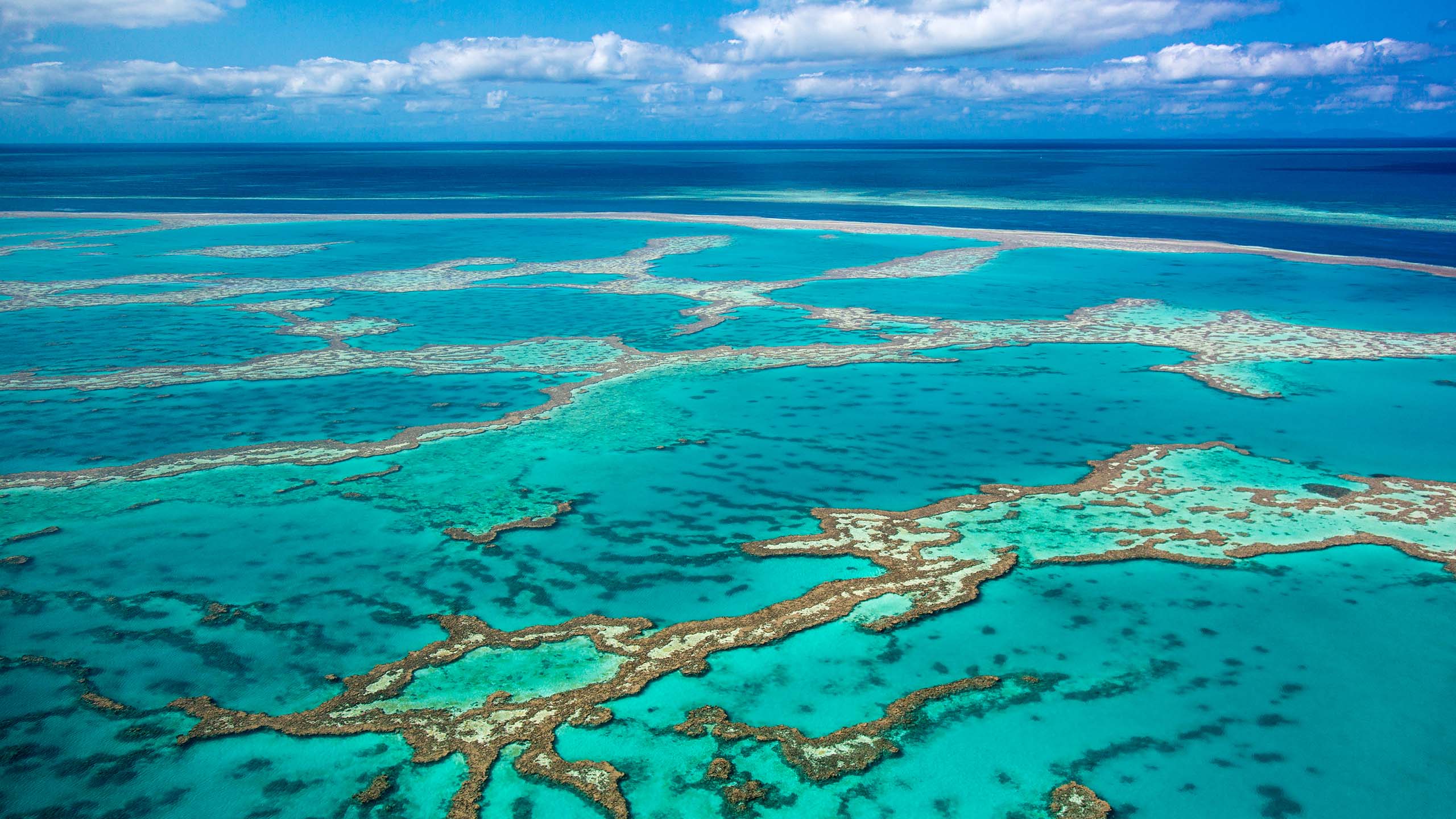Buying time: can science save the Great Barrier Reef?

The Great Barrier Reef is an Australian – and global – icon. The world’s largest coral reef system is filled with an abundance of marine life and is one of the world’s most popular tourist destinations.
But due to the impacts of human-caused climate change, this wonder of the natural world is at risk. Extreme heat waves, which are becoming more severe and more frequent, cause corals to suffer and possibly die in what are known as coral bleaching events.
If we don’t stop global temperatures – both on land and at sea – from rising, the Great Barrier Reef could become a coral graveyard.
A team of scientists has decided to do something about it.
Kevin Boutwell via Getty Images
Kevin Boutwell via Getty Images
“It’s a bit embarrassing to admit, but Finding Nemo really inspired me as a kid,” said Dr Dante McGrath. “When the film came out, I thought how much I wanted to go and see the Great Barrier Reef for myself. I grew up in Australia, and I was lucky to have that childhood dream come true not long after the film came out, and it was everything I’d dreamed it would be.”
McGrath is a postdoctoral researcher in the Centre for Climate Repair, based in Cambridge’s Department of Engineering. The focus of his work is marine cloud brightening, a technique that sprays a salty mist into the sky to increase the reflectivity of low-lying clouds at sea, so that more sunlight is bounced back into space, providing a temporary cooling effect. Specifically, McGrath studies seawater droplets and how to spray them using specialised nozzles to encourage the process of cloud condensation.
Earlier this year, at the height of the Australian summer, McGrath was part of a team led by Southern Cross University that spent nearly a month on the Great Barrier Reef, carrying out real-world experiments on marine cloud brightening and fogging: techniques that could temporarily protect the reef from the worst of the Australian summer heat. The experiments, led by Professor Daniel Harrison of Southern Cross University, were conducted as part of the Cooling and Shading subprogram of the Reef Restoration and Adaptation Program (RRAP).
Dr Alejandro Tagliafico on behalf of Southern Cross University
Dr Alejandro Tagliafico on behalf of Southern Cross University
It is a worrying time for coral reefs. In April, after a year of extreme heat in the world’s oceans, the US Government’s National Oceanic and Atmospheric Administration (NOAA) declared a global mass bleaching event for just the fourth time on record, and the second time in the past decade.
The Great Barrier Reef has been a frontline for bleaching events. In the three decades before 2016, just two mass bleaching events were documented on the reef, but since 2016, the UNESCO World Heritage site has suffered five mass bleaching events.
“It only takes a temperature change of about one degree, either up or down, for coral bleaching to happen,” said McGrath. “Corals are like orchids in a way – they’re very sensitive, but they can respawn after a few years. Coral bleaching is a natural phenomenon, but now, bleaching happens so frequently that the corals don’t have enough time to recuperate and respawn, so large parts of the reef have this white, ghostly quality to them. If we don’t do something about it, the whole reef could be lost.”
Dr Alejandro Tagliafico on behalf of Southern Cross University
Dr Alejandro Tagliafico on behalf of Southern Cross University
Recent modelling studies have suggested that marine cloud brightening could buy the Great Barrier Reef valuable time while we transition away from fossil fuels. “None of us on this project, or anyone working on marine cloud brightening, believes it’s a substitute for getting away from fossil fuels as quickly as we can,” said McGrath. “Cutting emissions has got to be our number one priority, but we’re reaching the point where we can’t wait any longer for that to happen.”
In January, McGrath joined Harrison and his Southern Cross University colleagues, along with the rest of the RRAP team, as they set out from Townsville in Queensland aboard two small research vessels to continue the fogging and marine cloud brightening experiments that RRAP has been conducting since 2020.
Marine cloud brightening is not without its critics, and it has potential risks as well as benefits. The work of the RRAP team however, is not focused on solar ‘geo-engineering’ proposals for cooling and shading the whole planet, but is localised and temporary, and relies on relatively benign sea salt particles. McGrath likens the team’s marine cloud brightening work to the relief provided by a parasol or a large tree on a hot sunny day.
During the research trip, the team was usually up at first light to prepare the sprayers and begin their tests well before the worst of the day’s heat. Typically, they would spray the salty mist for between four and six hours from sprayers on the deck of the larger of the two boats, while the smaller boat followed along behind, tracking and monitoring the plume. In addition, drones and a small aircraft were deployed to measure cloud and atmospheric properties.
“Of course, there was no such thing as an ordinary day on the boat,” said McGrath. “We were so weather-dependent and instrument-dependent that it was often the case that we didn’t know what we were going to be doing on any given day until we got up that morning.
“There were long stretches while we waited for the weather to clear, but then there were also sustained periods of regular activity, punctuated by short bursts of intense activity. As a team member, you had to be nimble, and as soon as the call came, you got to work right away. And if you had a spare moment and another team member needed a spare pair of hands, you pitched in and helped. It was a really collaborative and supportive environment.”
Dr Dante McGrath. Photo by Dr Alejandro Tagliafico on behalf of Southern Cross University
Dr Dante McGrath. Photo by Dr Alejandro Tagliafico on behalf of Southern Cross University
McGrath collected data characterising the water and salt particles used for the sprays. He and his colleagues tracked the saltwater plume using advanced diagnostics, and measured particle size, concentration and composition to determine the effectiveness of the cooling or shading effect.
McGrath’s work also measured temperature and salinity of the sprays, and chemical properties, such as dissolved oxygen and carbon content. This information helps optimise the spray performance for both fogging and marine cloud brightening. “And crucially, profiling the water helped us monitor the health of the reef itself,” said McGrath.
Preliminary findings suggest the generated plume can deliver particles into low-lying marine clouds. “But we’re still in the process of analysing reams of data, including from onshore weather stations, the two boats, the aircraft, drones, and satellite imagery,” said McGrath. “Only by pooling together these results – from air, land, and sea – can we draw robust conclusions from the experiments.”
About once per week during their research trip, the team took a break and went snorkelling on the reef, both to relax and to get up close with the ‘patient’ they were attempting to treat.
“A lot of the time when we went snorkelling, the reef was ghostly and pale due to all the bleaching,” said McGrath. “But there were other days where the reef was absolutely extraordinary, full of vibrantly coloured corals and fish, in crystal clear water. This contrast of experiences reminded me of what our work is trying to achieve. To get up close and personal with the reef, it really hits home how fragile the reef is, and how important it is that we do everything we can to save as much of it as we can.”
Image credits:
Dr Alejandro Tagliafico on behalf of Southern Cross University
The text in this work is licensed under a Creative Commons Attribution 4.0 International License





